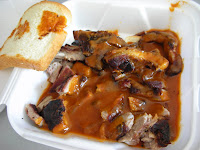
When I lived in Washington, DC, it seemed my wife and I knew every extant Muslim in town. Tons of Moroccans, Persians, Turks, Palestinians, Tunisians, Pakistanis, and some whose nationalities escape me right now. I was brought up Jewish and my wife Catholic, but it always amazed me that for all the intense global hatred among various religious groups, we all seemed to get along pretty well in our little enclave of Adams Morgan, a heterogeneous semi-melting pot with a lot of booze-soaked clubs and restaurants to smooth out any rough edges. There were also many Eritreans, Ethiopians, and of course Salvadorans, due to the conflicts in those countries leading to mass exoduses. And Nigerians, Sudanese, Somalians. Russians and Serbs, Albanians, Greeks-I could go on.
But the oddest pairing always seemed to be the Muslims and the Jew (Me). Why was it so easy to get along here, to take our friendships for granted, almost, when events taking place thousands of miles away put our brothers and sisters, sometimes literally, at each other's throats? It's hard to know what makes the hate that people have for each other intensify and grow until the only possible outcome is murder; and I suppose in our innocence, we cling to the hope that that could never happen to our friendships here in the US. 'Those crazy Jews and Palestinians over there!', I remember a friend of mine saying, and me agreeing. 'Why can't they get along like we do here? It's so easy!'
But enough of the ethnic harmony. Today we're here for something a little more important than world peace. It begins some time ago, when I bet someone I could eat nothing but thirty different hot dogs in thirty days, and never get bored. In fact, that's how I got my name. Standing with the other cab drivers at the bar in Flushing, Queens, across the street from the Main-Ro hack line, waiting for fares at one in the morning, ordering cold draft beers and 'singles', or a Frank Sinatra 'fully dressed', which was a hot dog with everything on it (everything in those days meant mustard and sauerkraut-ah, those were simpler times). But sometimes the frankfurter ain't what it should be, and those days are the worst days of all. For there is no emptier feeling, and nothing sadder really, than a bad hot dog.
So what about the conflict between these two cultures and their hot dogs, and how would it play out on the plate? I lined up the Hebrew National brand Kosher Beef Frank, and the Al Safa brand Halal Weiner, imported from Canada. I chose the accoutrements, and I chose wisely. There are Heinz English Baked Beans in Tomato Sauce, cole slaw, sauerkraut (warmed up first), dill pickle spears, Gulden's brown mustard, and homemade pickled radishes. No buns, which keeps the focus squarely on the meat in the dog. Each package was about $4, although the Al Safas weigh in at a full pound, whereas the Hebrew Nationals are just 12 ounces. The Kosher dogs were red, almost too red, but on the other hand, their Halal brothers were a worrisome pinkish-gray. I broiled two of each, and waited for the hissing and crackling.
In my side-by-side tasting, I have to say, without prejudice, that the Kosher dog is beefy and juicy in its snappy casing, whereas the Halal dog is almost gamy, perhaps from some added smoke-flavor, and the casing doesn't hold up too well under the broiler, either, maybe from a too-high water content. It's not science, and I did eat end up eating all four dogs, but on this day, the Hebrews won. All I can say is, Salaam Aleykum.
































